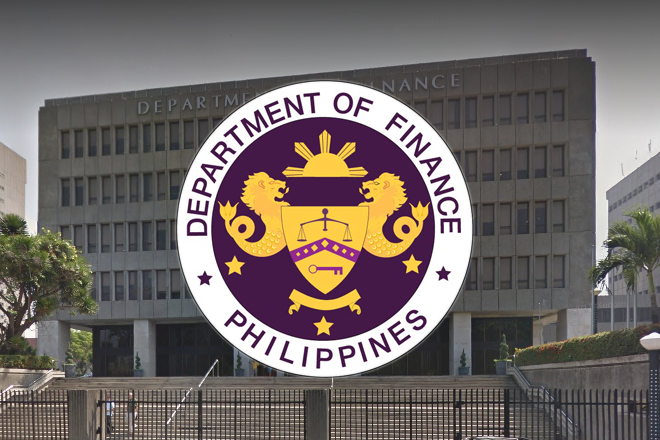Dominguez says BOP surplus, mild inflation prop up peso among Asia’s strongest currencies
September 1, 2020
The Philippine peso has emerged as among Asia’s strongest currencies even amid a pandemic-induced global economic downturn as a result of the country’s mild inflation rate and a balance of payments (BOP) surplus reflected in its record-high foreign currency reserves as of June this year, according to Finance Secretary Carlos Dominguez III.
As of September 1, the peso equivalent of the US dollar was P48.48 based on the Reference Exchange Rate Bulletin of the Bangko Sentral ng Pilipinas (BSP). Compared to the Jan. 2 rate of P50.8:US$1, the peso appreciated by at least 4.5 percent against the greenback.
Dominguez said confidence in the Philippine economy and the local currency are also among the factors that have raised the value of the peso against the US dollar.
The drop in the country’s imports as compared to its exports during the strict lockdown imposed by the government to contain the spread of COVID-19 has led to an overall favorable BOP position, which contributed to the strong performance of the peso, Dominguez noted during the recent virtual “Captain Speak” series of Maybank’s Invest ASEAN Conference 2020.
“(Second), because we were able to tap the foreign loans first from the multilateral agencies and then later from the bond market at very favorable terms, we have increased the size of our foreign reserves. In fact our foreign reserves now is at roughly $94 billion. This is actually larger than our total foreign debt,” Dominguez said in response to a query on why the Philippine peso has remained strong amid the COVID-19 crisis, during the Maybank event.
The Bangko Sentral ng Pilipinas (BSP) reported an overall BOP surplus of $80 million in June 2020, a reversal from the $404 million BOP deficit recorded in the same month last year.
This favorable BOP position is reflected in the unprecendent amount of US$98 billion in gross international reserves (GIR) as of end-July 2020.
The high GIR level is equivalent to 8.9 months’ worth of imports of goods and payments of services and primary income, and is about 7.5 times the country’s short-term external debt based on original maturity.
If based on residual maturity, the GIR is 4.9 times the country’s short-term external debt, according to the BSP.
On top of these factors, Dominguez said the Philippines’ low inflation rate of 2.7 percent as of July this year also contributed to the rise in the peso’s value against the US dollar.
“Our inflation rate is relatively mild. And I think people have confidence in the Philippines, in the currency. If I'm not mistaken it's only the Philippine peso and the Japanese yen that have actually appreciated in values since the beginning of this year. And now actually ours has appreciated by 3.4 percent or thereabouts,” Dominguez said during the forum held via Zoom last Aug. 10.
In addition to the Philippine peso and the Japanese yen, only the Taiwanese dollar and the Chinese yuan remained firmed against the American greenback, while most other Asian currencies have weakened.
Dominguez said that to stimulate the economy, consumer confidence needs to improve, as 70 percent of the country’s growth is consumption-driven.
“What we want to do is support consumption; get money back in people’s pockets so that they can spend,” Dominguez said.
Dominguez said restoring consumer confidence requires people to have jobs, which is why the government is going ahead on President Duterte's centerpiece program “Build, Build, Build," as infrastructure investments have the largest multiplier effects on the economy and creates a lot of jobs.
The government has restarted the “Build, Build, Build” program amid the pandemic, subject to strict compliance with health and safety protocols to protect workers from COVID-19.
Dominguez said at the Maybank forum that the Duterte administration will “redouble” its efforts to protect the economic gains it has achieved over the past three years, prepare the economy for a strong recovery and drive the country back on the road to high and inclusive growth in the face of the coronavirus-induced global health and economic crisis.
The government continues to balance the reopening of the economy and efforts to restore consumer and business confidence with health and safety interventions, so it can continue to protect lives in ways that do not prevent people from earning a living, he said.
Without continued and increased public-sector spending, especially on infrastructure, public health, and social protection, Dominguez said the Philippine economy would have performed much worse in the first semester, with the gross domestic product (GDP) shrinking by about 2.5 percentage points more than it did, or a total of 11.5 percent versus the actual 9 percent over the January-June period.
The economy shrank 16.5 percent in the second quarter, worse than the first-quarter contraction of 0.7 percent, resulting in a first-semester GDP contraction of 9 percent.
Given the uncertainties posed by the COVID-19 crisis, Dominguez said it will be difficult to make definitive pronouncements about the longer-term prospects of the economy.
The Development Budget Coordination Committee (DBCC), of which Dominguez is a member, has projected a strong rebound in 2021 with GDP growth reaching 6.5 to 7.5 percent.
Latest Videos
- THE UNTOLD STORY EXPERT INSIGHTS INTO THE UKRAINE
- NEGOTIATING A NEW ORDER US RUSSIA TALKS ON UKRAIN
- Ukraine: A Pawn in the Geopolitical Game? Will Trump Intervene?
- US VP VANCE CRITICIZES EUROPEAN DEMOCRACIES AT MUNICH SECURITY CONFERENCE
- UNCOVERING THE WEB OF DECEIT: CIA INFILTRATION OF THE MEDIA
- SHIFTING SANDS: TULSI GABBARD’S CONFIRMATION AND THE EVOLVING GLOBAL LANDSCAPE
- FAUCI SCANDAL: A THREAT TO GLOBAL HEALTH AND DEMOCRACY






